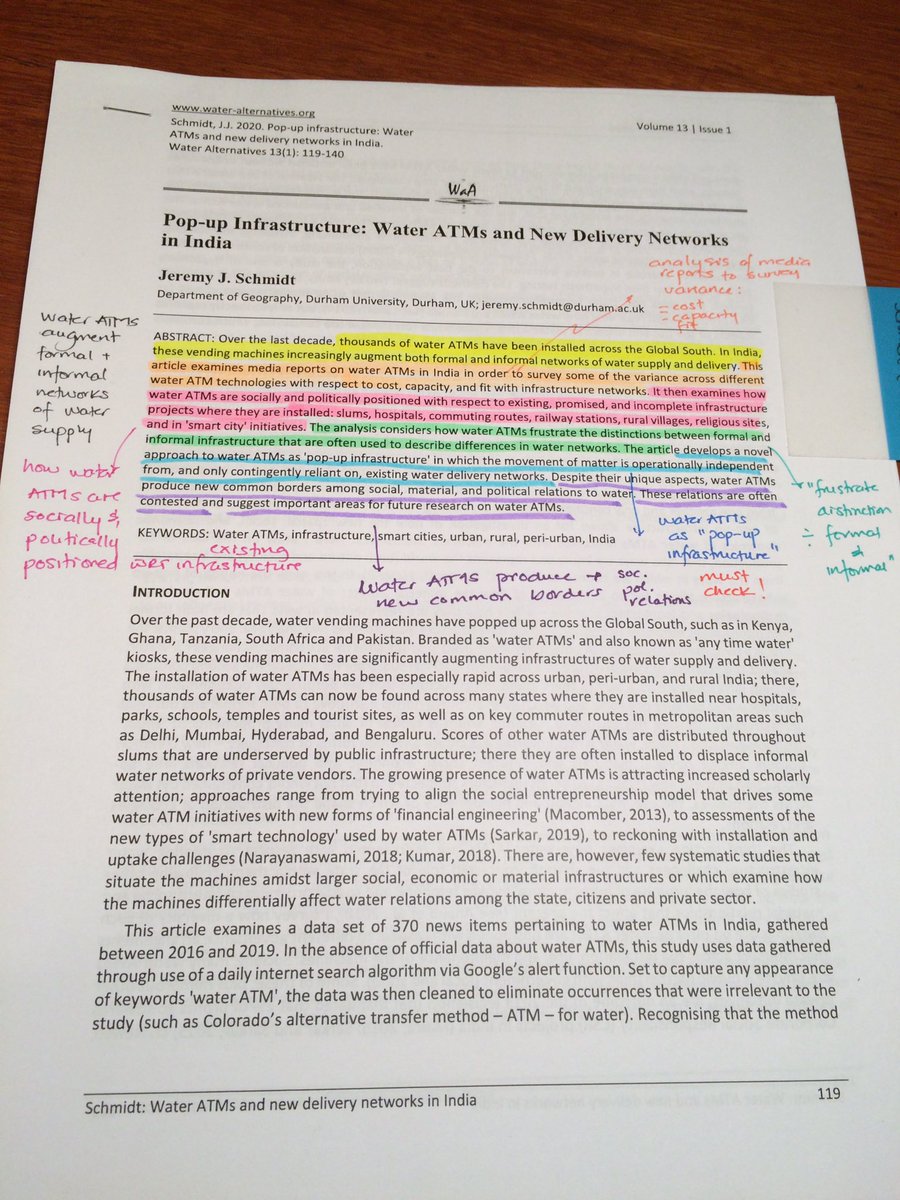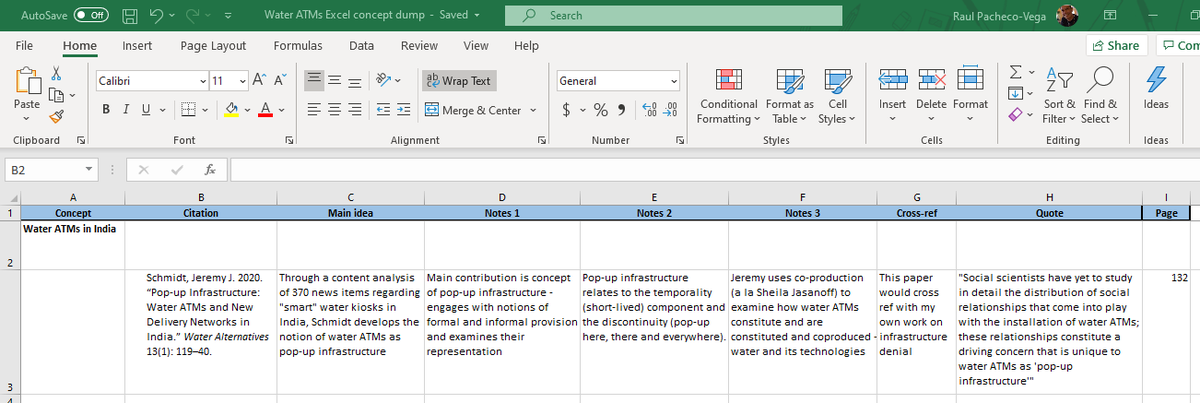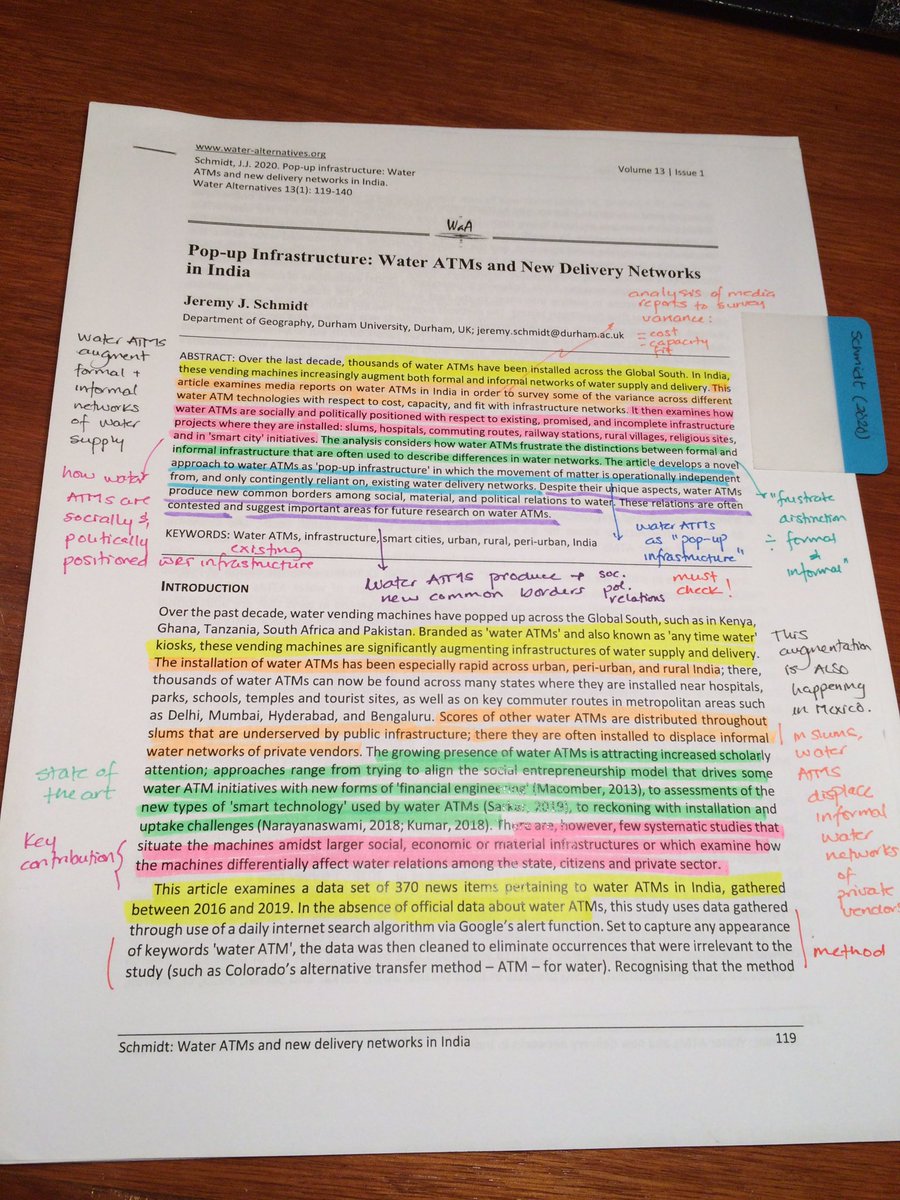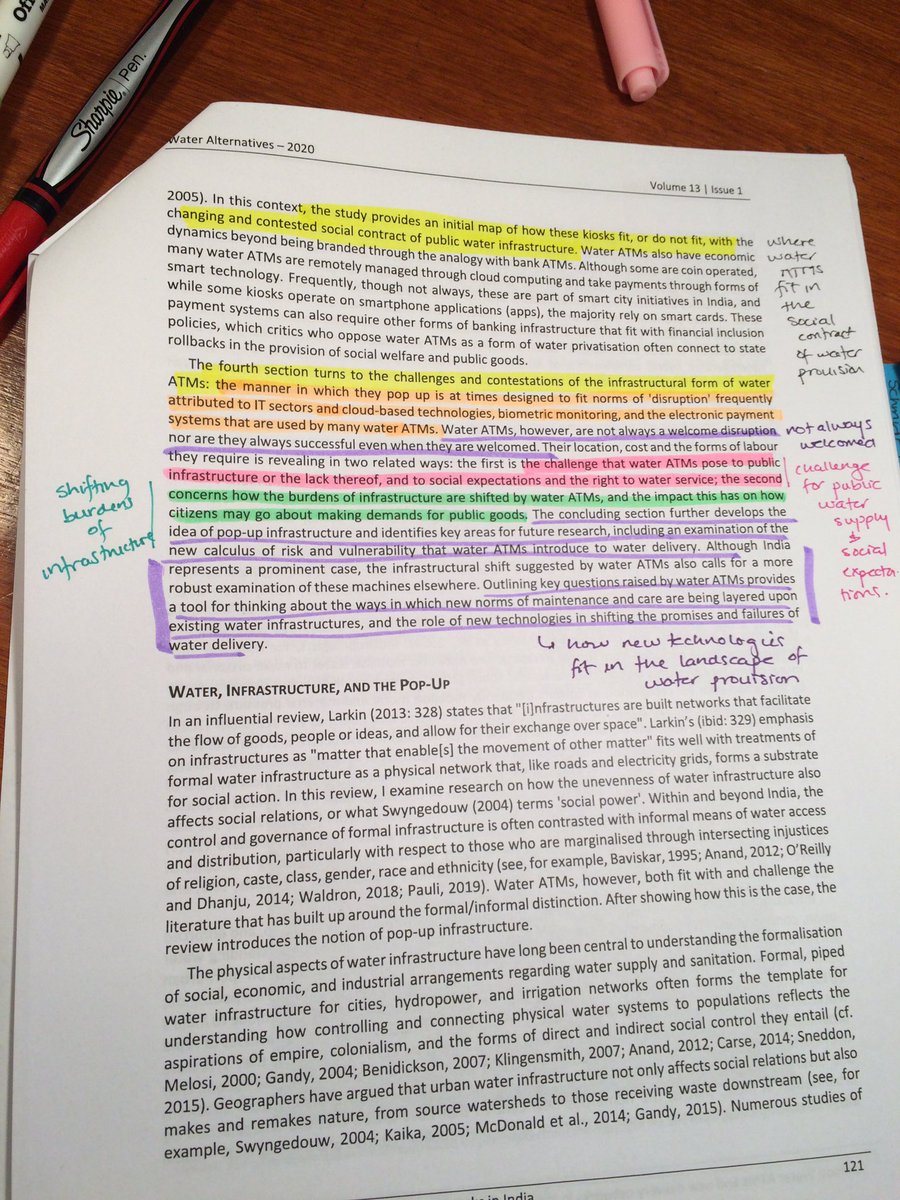Every few months, I launch an #AICCSED Challenge.
What does this mean? For me, my simple system of #2ThingsADay often means that the only two things I get done in a day is reading a paper (and annotating) using the AIC method, and dropping it into a CSED spreadsheet.
What does this mean? For me, my simple system of #2ThingsADay often means that the only two things I get done in a day is reading a paper (and annotating) using the AIC method, and dropping it into a CSED spreadsheet.
What we do in the #AICCSED challenge:
We drop a tweet reporting which article we read and we (often, not required) post a screenshot of the CSED (Excel Dump) row associated with said article.
What's the purpose? To keep us reading, synthesizing and summarizing EVERY SINGLE DAY
We drop a tweet reporting which article we read and we (often, not required) post a screenshot of the CSED (Excel Dump) row associated with said article.
What's the purpose? To keep us reading, synthesizing and summarizing EVERY SINGLE DAY
What an #AICCSED challenge is NOT - it's not intended to stress you out - we're in the midst of a pandemic, we're short on time, we're all stressed out.
But if you can participate in the #AICCSED challenge, by the end of the month you will have 30 articles summarized in an ...
But if you can participate in the #AICCSED challenge, by the end of the month you will have 30 articles summarized in an ...
... Excel spreadsheet.
It requires some time investment and re-prioritization. For example, I MUST finish a book chapter on climate politics, literally TODAY.
BUT... if I engage in the #AICCSED challenge, I want to read stuff on informal water, on waste and discards.
It requires some time investment and re-prioritization. For example, I MUST finish a book chapter on climate politics, literally TODAY.
BUT... if I engage in the #AICCSED challenge, I want to read stuff on informal water, on waste and discards.
I normally do round months instead of saying "let's do an #AICCSED fall semester challenge".
This semester, though, to help my student keep reading, I'm going to ask them to do the challenge themselves. It's only ONE article a day on their actual thesis research.
Not a lot.
This semester, though, to help my student keep reading, I'm going to ask them to do the challenge themselves. It's only ONE article a day on their actual thesis research.
Not a lot.
Again, I know we're in a pandemic, and this is in no way meant to stress anybody out. It IS on the other hand intended to provide structure for people so they can keep reading and systematizing their materials.
Q - I can only do 1 a week. A - GREAT, you'll have 4 more articles!
Q - I can only do 1 a week. A - GREAT, you'll have 4 more articles!
Q - I can join #AICCSED but only infrequently
A - Fantastic! Whatever progress you make on staying on top of the metric tonne of readings we have to do is great
Q - I would like to do this once the beginning of the term is over
A - Fabulous. Join whenever you can!
A - Fantastic! Whatever progress you make on staying on top of the metric tonne of readings we have to do is great
Q - I would like to do this once the beginning of the term is over
A - Fabulous. Join whenever you can!
Relevant links:
AIC - raulpacheco.org/2017/01/findin…
CSED - raulpacheco.org/2016/06/synthe…
The AIC+CSED combo - raulpacheco.org/2017/12/carvin…
Challenge 1 - April 2018 raulpacheco.org/2018/03/the-mi…
Challenge 2 - October 2018
raulpacheco.org/2018/10/the-oc…
#2ThingsADay: raulpacheco.org/2018/04/the-ac…
AIC - raulpacheco.org/2017/01/findin…
CSED - raulpacheco.org/2016/06/synthe…
The AIC+CSED combo - raulpacheco.org/2017/12/carvin…
Challenge 1 - April 2018 raulpacheco.org/2018/03/the-mi…
Challenge 2 - October 2018
raulpacheco.org/2018/10/the-oc…
#2ThingsADay: raulpacheco.org/2018/04/the-ac…
Test drive: It's 6:23am - I have a Zoom meeting at 7:30am and another one at 8 am.
The 2020 #AICCSED challenge would start TOMORROW September 1st, BUT the one I am presenting here is just a test-drive.
Here we go.
The article I chose is by @jeremyj_schmidt
The 2020 #AICCSED challenge would start TOMORROW September 1st, BUT the one I am presenting here is just a test-drive.
Here we go.
The article I chose is by @jeremyj_schmidt
Sequence of photos is:
- clean article
- highlighted abstract
- annotated abstract
Moving on to the Introduction of the paper.


- clean article
- highlighted abstract
- annotated abstract
Moving on to the Introduction of the paper.



And here is the #CSED entry for Schmidt 2020 (@jeremyj_schmidt)
Personally, I found Jeremy's paper too rich in theory and good ideas to just stick to a quick AIC content extraction, but this process was just to showcase how the #AICCSED challenge goes.
water-alternatives.org/index.php/alld…
Personally, I found Jeremy's paper too rich in theory and good ideas to just stick to a quick AIC content extraction, but this process was just to showcase how the #AICCSED challenge goes.
water-alternatives.org/index.php/alld…

So, to recap: the #AICCSED challenge consists of you reading one article a day using the AIC method (see tweets above) and dropping your notes into a CSED row. Tweet a screenshot if possible, and a link to the paper (and tag the researcher if you so wish!)
NEW BLOG POST - The September 2020 #AICCSED Reading, Annotating and Systematizing Challenge raulpacheco.org/2020/09/the-se…
This thread, explaining the WHY and HOW of the #AICCSED challenge.
Are you in? We've started TODAY (September 1st, 2020)
This thread, explaining the WHY and HOW of the #AICCSED challenge.
Are you in? We've started TODAY (September 1st, 2020)
• • •
Missing some Tweet in this thread? You can try to
force a refresh







